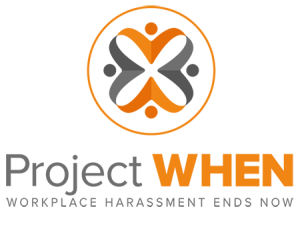How to Evaluate Performance for Remote and Hybrid Teams
Why Performance Reviews Are Important in Remote and Hybrid Work Settings
 Remote work is here to stay, and many companies are establishing new processes to address the business changes and workforce requirements that come with remote or hybrid work programs. Performance management strategies are one such type of process requiring transformation when remote work is performed, with the goal of keeping managers and employees aligned on feedback, goals, and expectations.
Remote work is here to stay, and many companies are establishing new processes to address the business changes and workforce requirements that come with remote or hybrid work programs. Performance management strategies are one such type of process requiring transformation when remote work is performed, with the goal of keeping managers and employees aligned on feedback, goals, and expectations.
Performance reviews have traditionally been conducted in a physical office setting behind closed doors. Performance reviews are the manager’s opportunity to evaluate the contribution of an employee as it pertains to the overall success of the business. Performance evaluation criteria can range from attendance and punctuality to overall work quality and productivity. Managers consider various performance evaluation criteria to gauge if an employee is working at par with the standards set by the company.
How Workplace Strategy Impacts the Performance Review Process
With the rise of remote and hybrid workplace strategies, how can managers fairly evaluate their employees’ performance when employees work from home and are “out of sight” of their managers? Adherence to performance review best practices helps both managers and employees align on performance expectations in a remote work setup.
Employees who work remotely or participate in a hybrid remote work setup require thorough and thoughtful performance reviews on a regular, pre-determined cadence. Performance reviews by their very nature – irrespective of whether they are virtual or in-person – can make employees feel a bit nervous or worried. The establishment of mutually-understood performance review milestones helps reduce employees’ anxiety about forthcoming performance reviews, when the reviews will occur, and what criteria will be evaluated.
For employees who work entirely remotely, performance reviews are generally conducted using video conferencing tools. Some remote employees find greater comfort in virtual performance reviews, feeling a bit “safer” or protected from criticism through the computer screen and having a chance to better prepare themselves through self-dialogue practices.
However, remote employees often also have concerns about equitable virtual performance reviews for work performed remotely. They fear that their remote work performance could be evaluated unfairly, especially in comparison with how their in-office colleagues are reviewed. These employees worry that being a remote worker poses a disadvantage in terms of how the company evaluates their skills and contributions.
Hybrid workers typically have the opportunity to meet in person with their manager to discuss their performance reviews. Managers should consider hosting performance review meetings in a conference room, as opposed to the manager’s office, giving the employee the benefit of a neutral environment during the meeting.
As with remote employees, hybrid employees may have concerns about their manager’s perceptions of work performed remotely. Managers and hybrid employees need to work together to align on expectations and goals, and managers must relay their feedback based on direct observations of employee interactions.
How can employers and employees address the perceived disparity between virtual and in-office performance reviews? SCG helps organizations understand the complexities of these issues and works with companies to implement customized strategies for remote team performance management.
How to conduct effective virtual performance evaluations
It is human nature that performance evaluations often feel slightly uncomfortable for managers and employees alike, as the process of evaluating a team member’s performance (or receiving that feedback) is an emotional process. Virtual performance evaluations can be difficult to conduct, even for high-performing managers and team members.
Despite the ease offered by technology, virtual performance reviews make it difficult to relay and interpret physical cues and reactions, potentially leading to miscommunication between the manager and employee. Being physically separated during moments of critical feedback increases the possibility of emotional misunderstanding, whereby an employee might feel unsupported and undervalued.
It is easy to dismiss these non-verbal cues as insignificant conversational glitches, but these communication signals can have a large impact on employees who may mistakenly feel undervalued by the employer. Managers and employees need to align on expectations, goals, and feedback, as this is an instrumental factor in helping employees stay motivated to work remotely and remain productive team members.
To eliminate or reduce the negative implications of remote work performance reviews, there are several tools and strategies that employers and managers should develop and implement:
Provide the Right Video Conferencing Tools
Embracing remote work means keeping up with the right tools and technology assets that make communicating with your team much easier. Companies should provide these tools to remote teams to lessen technical difficulties during work, inclusive of performance reviews.
Emails, templates, and forms should never be relied upon as the sole method for delivering a performance evaluation. Discussion is key to an effective performance review and remote employees deserve to have a transparent, honest dialogue with their managers regarding their performance.
When possible, managers should use video conferencing tools to have a virtual face-to-face discussion with their employees. The camera function should be enabled so that both the manager and employee can more easily follow the discussion and pick up on any nonverbal cues. Managers and employees alike might agree to record the conversation for future reference of discussed expectations and goals.
 Provide Clear Feedback
Provide Clear Feedback
Emphasis should be given on the frequency and the clarity of the feedback provided to remote employees. Establishing a performance review schedule and expectations of the type of feedback provided will help offset the lack of personal contact that remote work causes between employer and employees.
Being clear and explicit about the feedback eliminates the chances of misinterpretation. Managers should do their best to avoid ambiguities and carefully listen to their employees, to ensure that nothing gets lost in translation.
Many companies find it helpful to increase the frequency of performance reviews or feedback discussions when an employee is working remotely. Checking in on remote employees more frequently reminds them that they are part of the team and that they are valuable to the company. More frequent communication also allows for more immediate solutions to problems and promotes the ability to course-correct any emerging issues that could lead to longer-term challenges. In addition, because remote work strategies are relatively new for many organizations, having constant meaningful feedback will help lay the foundation of a better-defined work from home policy for the company.
Create an Employee Review Template
Performance review templates offer a valuable productivity benchmark for employees.
Creating performance review templates designed specifically for remote and hybrid workers is becoming a common process for companies that have implemented remote work strategies. These templates should help track the progress and performance of the employee aligned with the expectations of the remote role for which the employee is hired.
It is also important that managers share this template with remote and hybrid employees during the onboarding process so that employees will have an understanding of goals and expectations. By developing and sharing a performance review template designed for remote workers, managers and employees can more easily align on goals and expectations.
Create Guidelines for Self-assessment
Remote and hybrid workers are expected to showcase a level of independence and autonomy in their daily work routine.
This expectation should be explicitly discussed during the hiring process and throughout the employee’s tenure. Managers need to trust that their remote employees can work independently, without being in “line of sight” at the physical office.
As such, establishing self-assessment tools will help remote workers stay on track and succeed with their goals and responsibilities. These self-assessment tools can be customized for each organization, and share similarities with employee surveys and group discussions.
Self-assessment tools enable employees to reflect on their own performance and make necessary adjustments. This process helps build employee confidence, as they realize how their talents and contributions positively impact the business.
Remember to Listen
During remote performance reviews, managers tend to do most of the talking.
An important aspect of the review is to open a two-way dialogue with the employee and allow them to share their feedback about their performance, management, or any other concern they may have about the job. Allowing remote workers to contribute to the review will ultimately result in a more transparent and positive work environment.
Managers should also keep in mind that while constructive feedback regarding improvement is required during the evaluation process, it is also important to provide positive feedback to the employee on areas where she excels.
Establishing the Right Performance Management Strategy for your Remote and Hybrid Teams
With every change in workplace strategy, it is important to be guided with the right knowledge and tools to help ensure that these changes are achieved in the smoothest ways possible.
Through years of experience, SCG continues to provide workplace change management best practices for clients across many different industries. Improver organizational effectiveness as you embrace a remote workplace strategy, and create performance management strategies that truly fit the culture and needs of your organization. Fill out the form below to get started.

 Provide Clear Feedback
Provide Clear Feedback

